All about scrapbooking cuttings
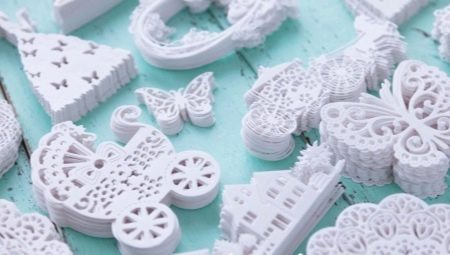
Not a single fan of scrapbooking techniques can do without various kinds of die cuts. They complement the overall image of the product. In addition, with the help of such decorative elements, you can quickly and easily decorate your creations.
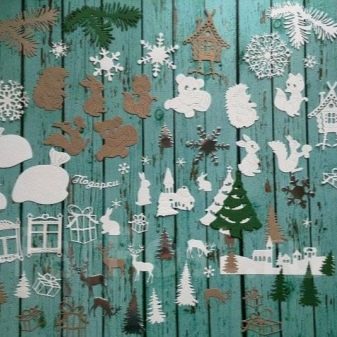
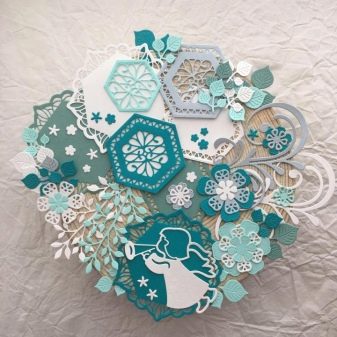
What it is?
Punching or nibbling are figures that are cut according to a specific pattern from thick paper, cardboard, thin plywood and felt.
They are used to decorate photo albums, postcards, cookbooks, business card holders, photo frames and non-scrapbooking crafts.
Today the number of different forms is very large. Among them you can find:
- butterflies;
- bows;
- mini frames;
- hearts;
- curls;
- arrows;
- crowns;
- keys;
- tags;
- flowers;
- snowflakes;
- letters and more.
All this can be bought ready-made, either as a set or individually. Sold in a special craft store.
Die-cuttings are often almost the main decoration of the product: they add airiness and volume, being used as an independent element in the composition, and as a border element, that is, located on the edge.
There are different types: coated and uncoated, openwork and ordinary. Coated cuttings already have a color or a certain image, and uncoated ones are ordinary colorless figures that can be painted or decorated to your liking.
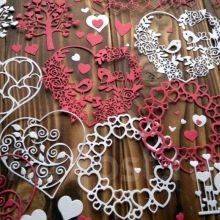
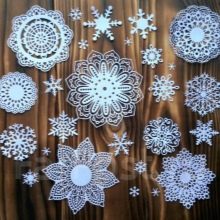
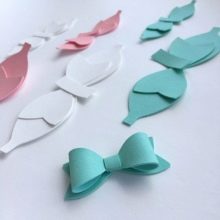
Tools and materials
To obtain these beautiful, interesting decorative elements, a special punching machine is used.
If scrapbooking occurs from time to time, then it is easier and cheaper to buy die-cut cuts in a store, since buying a typewriter is not a cheap pleasure.
But if this type of creativity is an income-generating activity, then it is better to purchase this unit.The assortment is large enough, choose according to your taste. When choosing a machine, it is necessary to take into account such indicators as:
- equipment;
- the size;
- is it possible to use knives from other manufacturers;
- price;
- what density materials can be used for cutting;
- quality of cutting knives;
- the convenience of use.

With the help of such an apparatus, it is possible not only to obtain figures of an interesting shape, but also to make embossing. It is a squeezed print on paper, not cut through. For this purpose, absolutely any knives can be used.
There are two types of punching machines: automatic, where a high-quality product or embossing is obtained at the touch of a button, and mechanical, where you need to scroll the handle yourself.
Of course, the price of an automatic model will be much higher. Whether it is worth overpaying is up to you, since scrolling the handle will not be difficult. The cutting process is very simple. On a special plate, put the material from which the pattern will be carved, put a knife on top with the cutting part down, and again the plate. By twisting the handle, the movement of the platform is started and the "sandwich" on it passes between the two rollers under pressure, thereby cutting through the figure on paper or other material.
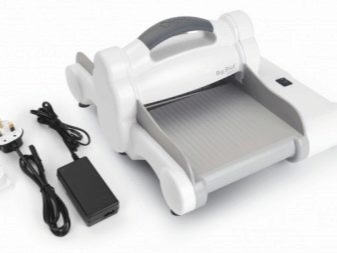
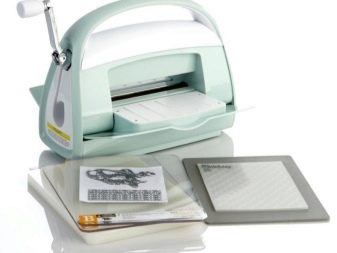
There are machines that cut through even thin plates of metal. If you are cutting thin fabric, fold it several times. And on top of the plate you can put another layer of paper. This is when the pressure of the rollers is not sufficient for efficient punching. In general, any fabric material will cut much better if ironed before use.
In addition, thorough cleaning of the knife from the remnants of the material will be a good guarantee that the next use the slots will be of high quality, and the product can be easily removed from the base.
The plates themselves can also be flipped occasionally to align them. A mock knife, a simple awl or a large needle is used to remove the remnants of the material from the stencil and knife. Take your time to throw away the removed die-cut pieces: they can be used as confetti or individual decorations.
Embossing is done with any of the knives, but a special spacer is used to prevent the knife from cutting through the material. To do this, put a spacer, then a sheet of paper, then a rug, a knife, a plate and roll it through the machine. As a result, you will get a wonderful pattern on paper, which is used when decorating various objects.
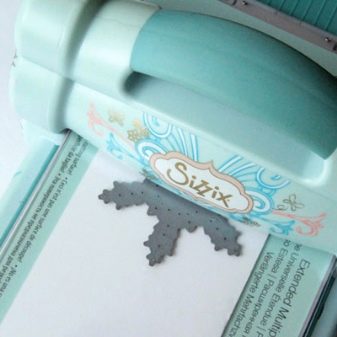

In addition to the machine, curly scissors and hole punches are used. Both come in different forms. With scissors, you can quickly and easily make a beautiful edge on paper. The curb punch also copes with this task, only the edge is openwork.
There is a figured hole punch that punches holes in the form of a certain figure.
Pay attention to the recommendations for paper weight. If you use too thin material, you can damage the hole punch itself.... There is also a corner composter, which makes the edges of the paper look beautiful. If there are no such tools at hand, but cutting down is very necessary, then you can do without them.
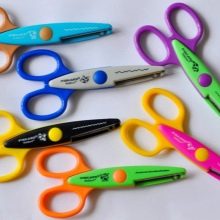
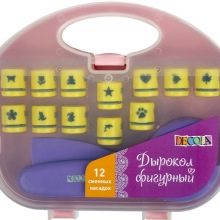
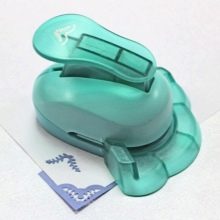
How to do it?
To make cutting out of paper, fabric, and even wood with your own hands, you need to print on a printer or draw a stencil. Cut and attach to the base you want the final result from. Next, cut out the figure with nail scissors. The process is quite tedious and long. But butterflies, flowers and other details for decoration will not be difficult to cut in this way, if it is not openwork cutting.
For openwork, it is much more convenient to use a breadboard knife. Several blade options are available:
- pointed;
- with rounding;
- penny;
- stationery;
- disk.
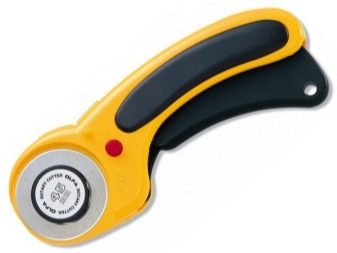
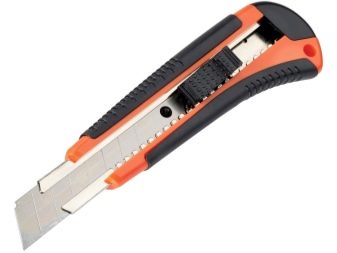
Disc are subdivided into blades:
- with a curly line;
- dotted line;
- a straight line.
They should be used on special rubberized rugs.They are designed specifically for this type of activity, they prevent slipping of both the knife and the workpiece.
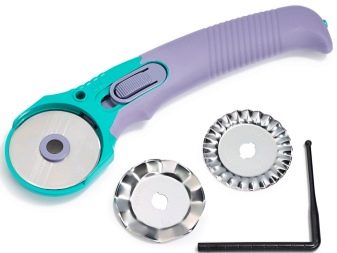
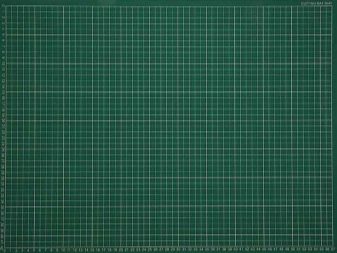
You can also make die-cutting with machine knives without using the machine itself. We put the knife on the design paper, cutting part down. We fix it with masking tape, after removing excessive stickiness, so as not to tear off the top layer of paper when removing. Next, turn the paper upside down and use something metallic, for example, the back of a pair of tweezers, to drive with force in the places where the knife is located.
Quite a difficult task, but nothing is impossible if you really want to.
Do-it-yourself embossing is easier to do. Consider a master class.
Necessary materials:
- spray bottle with water;
- ordinary rolling pin;
- embossing plate or folder;
- paper;
- ink pad optional.

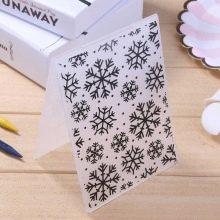
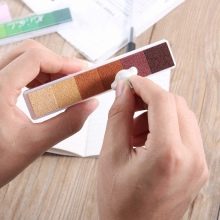
The first step is to sprinkle water on the paper. If you want to get an embossing with a shade, then with an ink pad of the color you like, go over the convex parts on the plate. Next, put a sheet of paper in a folder with the selected side to the painting surface, cover with a lid on top and roll with a rolling pin with strong pressure. This is a good alternative and also very budget friendly.
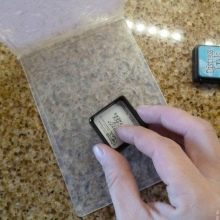
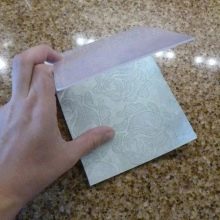
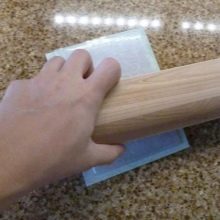
Flowers for scrapbooking can not only be cut out in the form of a flat picture, but also made voluminous from scrap materials. Let's consider several ways.
To make a cotton rose, you need to cut strips of thick cardboard one centimeter wide, and the strips of fabric are twice as wide. Fold the fabric in half lengthwise and iron with an iron. Next, screw it onto the cardboard with a spiral and iron it again. Remove the paper and wind the strips of fabric on a pencil or thick skewer, forming a rose, pin with a pin. Then cut out circles from thick paper, slightly larger in diameter than the bud - here you can use a curly hole punch. Smear the paper with glue, put a flower on top and, straightening the petals, glue.
In the middle, you can insert brads, a button, a bead - at your discretion.
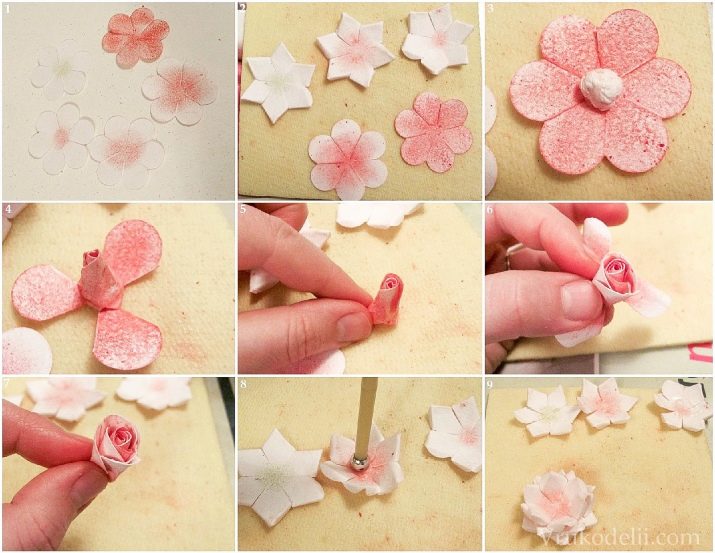
Alternatively, you can make airy chiffon flowers. To do this, cut into circles of a certain size, depending on how large the flower is needed. For one flower, five circles are enough. To give the petals a more interesting look, gently burn them with a lighter or candle.
Fold each petal in half, drop a little glue in the middle and roll it perpendicular to the first fold.
Next, cut out the base for the flower from felt or felt in the form of a circle. Apply glue and petals. You should not press them with your fingers to the base: through a thin fabric, the glue will easily saturate the petals completely, as a result of which they will flatten and not be airy. In the form of a core, you can use rhinestones, beads, beads, bugles and so on.

See below for a detailed overview of the mechanical cutting machine.








